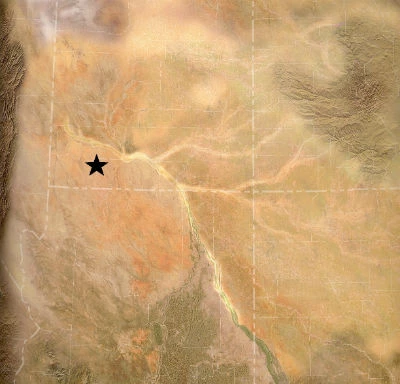
Paleogeographic map courtesy of Ron Blakey, Colorado Plateau Geosystems, Inc. 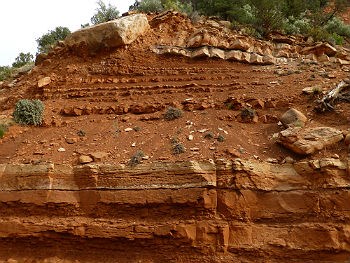
NPS photo/Adrienne Fitzgerald ~195-185 million years ago
The Kayenta Formation consists of layers of reddish-brown and pink sandstone, and varicolored mudstone and siltstone deposited in streams and rivers within an arid environment.
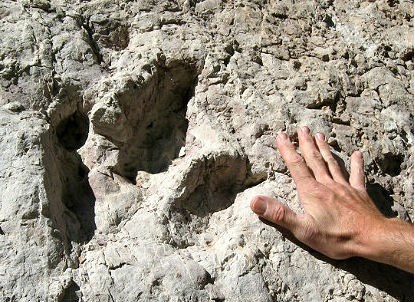
NPS photo/Adrienne Fitzgerald Learn more about dinosaur tracks found in the Kayenta and Moenave Formations
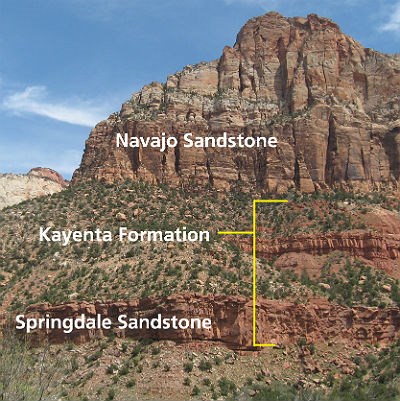
NPS photo/Adrienne Fitzgerald The Springdale Sandstone is considered to be a sub-unit or member of the Kayenta Formation, and was deposited by a main river channel associated with the same river system responsible for the deposition of the Moenave and Kayenta formations. The Springdale Sandstone is visible in lower Zion Canyon as the prominent reddish cliff band above the canyon floor, separating the lower Moenave layer from the rest of the Kayenta Formation.
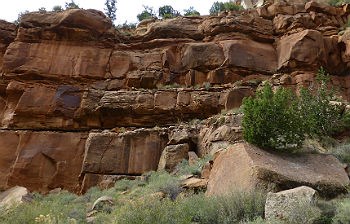
NPS photo/Adrienne Fitzgerald Return to the main Rock Layers page
|
Last updated: July 6, 2015
